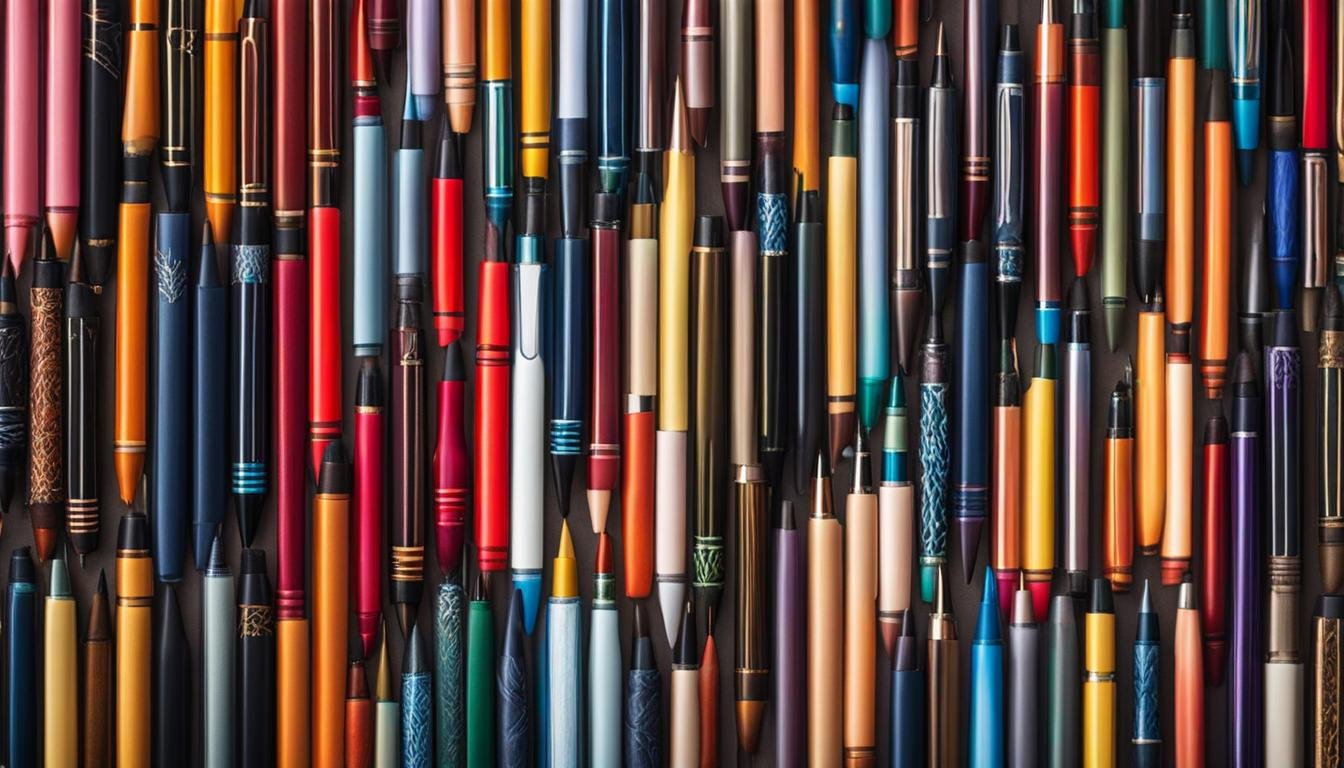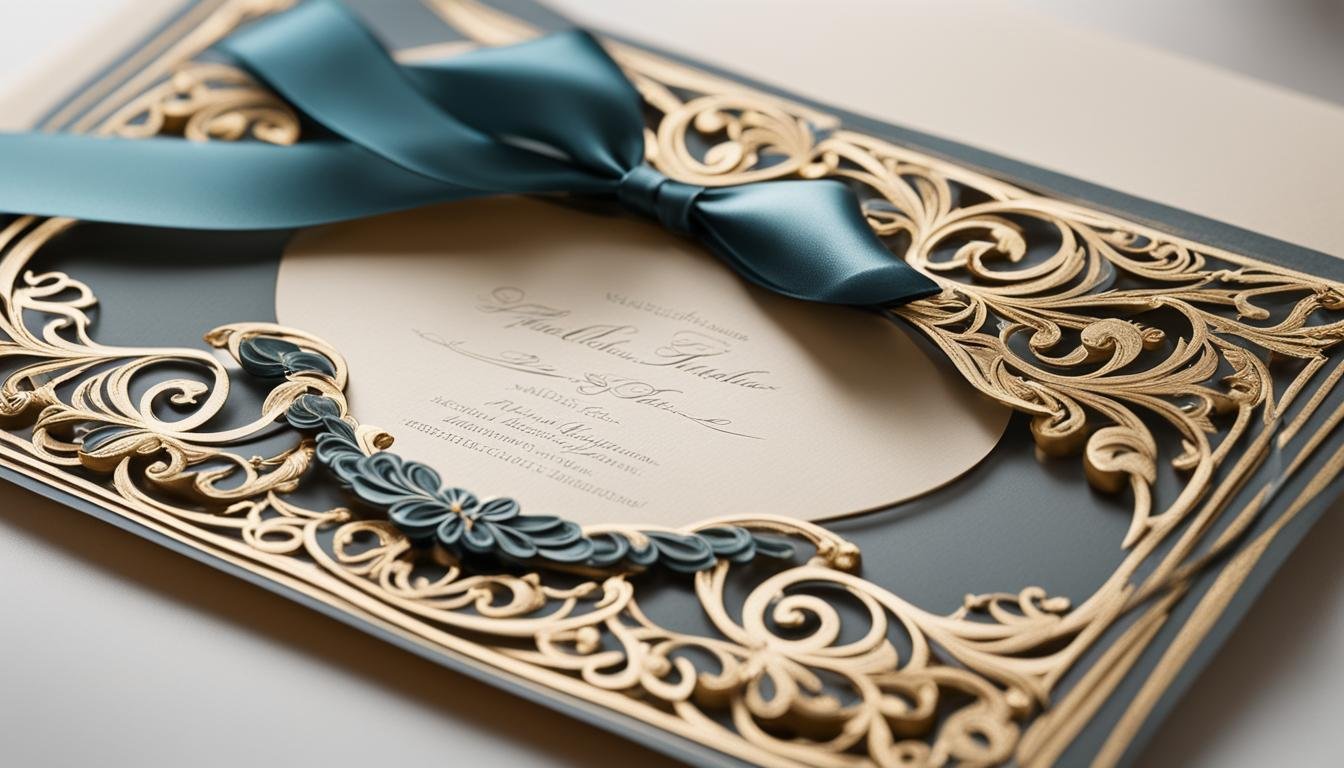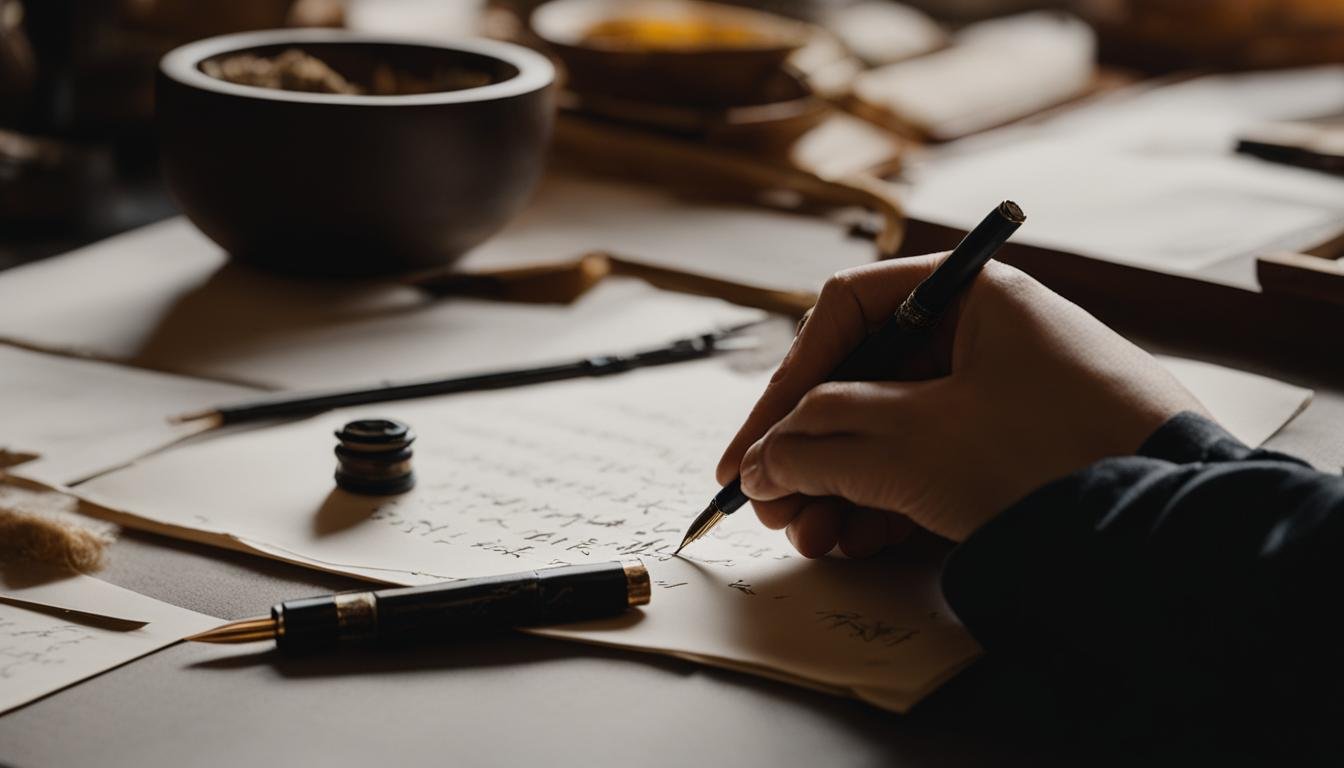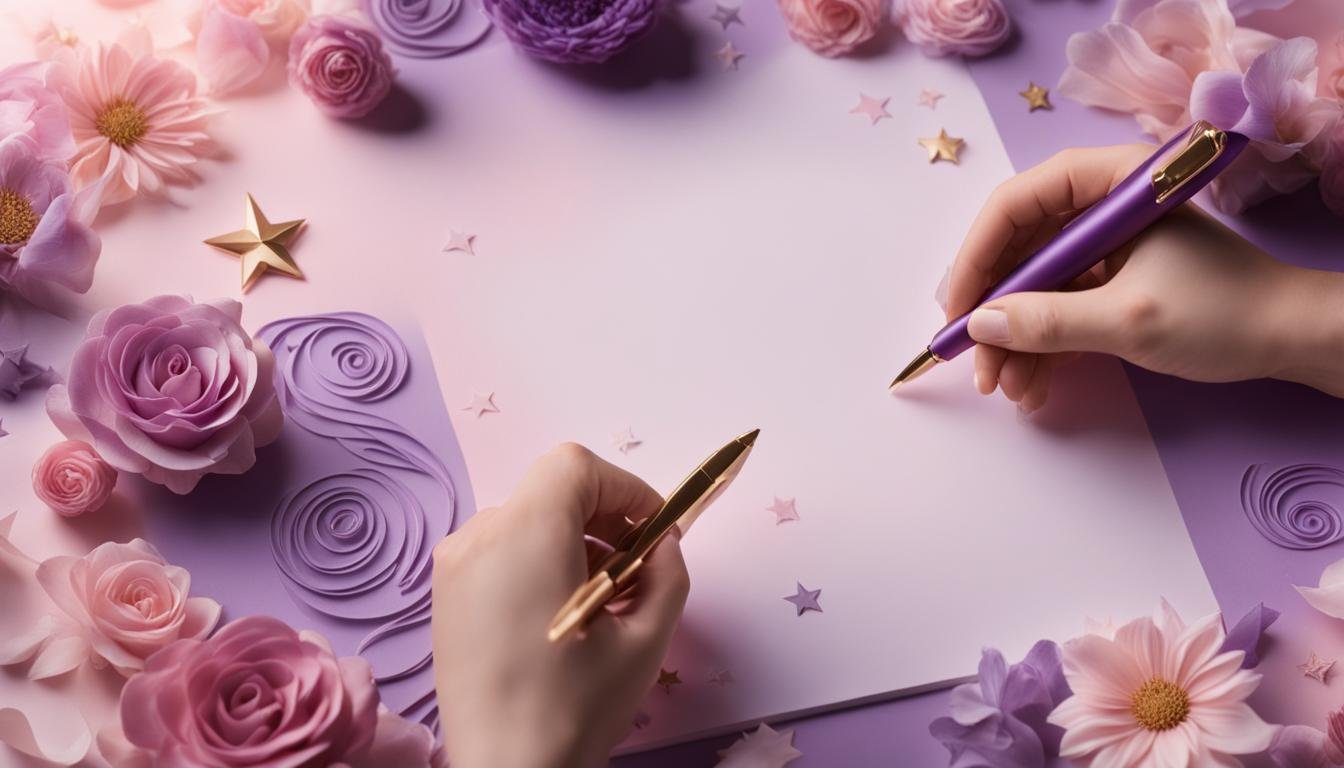Calligraphy Pen Choices: Discover the Ultimate Tool for Your Artistic Journey
Are you intrigued by the beauty of calligraphy and eager to start your own journey into this elegant art form? One of the first choices you’ll need to make is selecting the right calligraphy pen. The pen you choose can greatly impact your experience and the quality of your lettering. With so many options available, it’s important to navigate the world of calligraphy pen choices to find your perfect match.
Understanding the different calligraphy pen categories is a crucial first step. Broad-edged calligraphy pens, pointed nib calligraphy pens, and brush pens each offer unique qualities and are suited for specific calligraphy scripts and styles. By familiarizing yourself with these categories, you can make an informed decision that aligns with your artistic vision.
When it comes to beginners, the Pilot Parallel Pen stands out as an excellent choice. Its user-friendly design and affordability make it an ideal option for those just starting their calligraphy journey. With various sizes available and a wide range of ink colors, this pen provides endless possibilities for beginners to explore.
For those interested in broad-edged calligraphy styles, alternative options include solid felt-tip markers, such as the Kuretake Zig Calligraphy, Sakura Pigma Calligrapher, and Speedball Elegant writer. These pens offer ease of use and can be a great stepping stone towards mastering the art of calligraphy.
If you’re inclined towards pointed nib calligraphy, a pencil or a smaller-sized brush pen like the Faber Castell 5B pencil or the Pentel Fude Touch Sign Pen can be a great starting point. Using a pencil for faux calligraphy allows you to achieve beautiful lettering even without a traditional calligraphy pen.
When it comes to brush pens for pointed nib calligraphy, the Tombow Fudenosuke Brush Pen and the Tombow Dual Brush Pen are highly recommended. These pens offer excellent control over strokes and can create both broad and narrow lines, giving you the flexibility to experiment and create unique lettering styles.
If your focus is on hand lettering, the Pilot Metropolitan emerges as the top choice. Its elegant design, affordability, and versatility make it a favorite among hand lettering enthusiasts. It’s a reliable companion for both everyday use and more formal hand lettering projects.
For those looking for alternative calligraphy pens for hand lettering, the Tombow Fudenosuke Brush Pen, Tombow Dual Brush Pen, Staedtler Calligraphy Pen Set, and Staedtler Marsgraphic Duo are worth considering. These pens offer a range of nib sizes and are perfect for creating various hand lettering styles.
The Faber-Castell Pitt Artist Pen shines as the best calligraphy pen for hand lettering. With its durable brush nib and use of waterproof India ink, this pen allows you to create long-lasting artwork that will stand the test of time.
Finally, if you’re seeking an alternative calligraphy pen for hand lettering, the Faber-Castell Grip 2011 Calligraphy Pen is a great choice. Its ergonomic grip and refillable ink cartridge make it both comfortable to use and environmentally friendly.
Remember, choosing the right pen is just the beginning. Selecting the appropriate ink and paper for calligraphy is equally important. Consider the type of ink that suits your preferences and the paper weight and texture that complement your chosen pen and lettering style.
Key Takeaways:
- Choosing the right calligraphy pen is crucial for a successful calligraphy journey.
- Understanding the different calligraphy pen categories helps you select the pen that aligns with your artistic vision.
- The Pilot Parallel Pen is an excellent choice for beginners, offering affordability and versatility.
- Alternative pens, such as solid felt-tip markers, provide easier options for broad-edged calligraphy styles.
- Pencils and brush pens like the Faber Castell 5B and Pentel Fude Touch Sign Pen are suitable for pointed nib calligraphy.
Understanding Calligraphy Pen Categories
When it comes to calligraphy, selecting the right pen is essential for achieving the desired results. There are three main categories of calligraphy pens: broad-edged calligraphy pens, pointed nib calligraphy pens, and brush pens. Each category offers unique features and advantages, allowing you to create different calligraphy styles.
Broad-edged calligraphy pens: These pens have a flat, wide nib that is ideal for creating thick and thin lines. They are commonly used for traditional calligraphy scripts such as Italic, Gothic, and Uncial. Broad-edged pens come in both cartridge-fed and dip pen styles, allowing for versatility in ink options.
Pointed nib calligraphy pens: Pointed nib pens have a fine, tapered nib that allows for precise control over thin and thick strokes. They are commonly used for modern calligraphy styles such as Copperplate, Spencerian, and English Roundhand. These pens can be either cartridge-fed or dip pens, providing options for different ink preferences.
Brush pens: Brush pens have a flexible brush-like tip that produces a variety of line widths depending on the pressure applied. They are popular for creating contemporary calligraphy styles and are often used for brush lettering and modern script styles. Brush pens are available in different sizes and with various types of bristles, offering a wide range of creative possibilities.
Comparison of Calligraphy Pen Categories
| Pen Category | Features | Calligraphy Styles | Pros |
|---|---|---|---|
| Broad-edged Calligraphy Pens | Flat, wide nib for thick and thin lines | Italic, Gothic, Uncial, etc. | Versatile, traditional feel |
| Pointed Nib Calligraphy Pens | Fine, tapered nib for precise strokes | Copperplate, Spencerian, Roundhand, etc. | Precise control over thin and thick lines |
| Brush Pens | Flexible brush-like tip for various line widths | Brush lettering, modern scripts, etc. | Wide range of creative possibilities |
Best Calligraphy Pen for Beginners: Pilot Parallel Pen
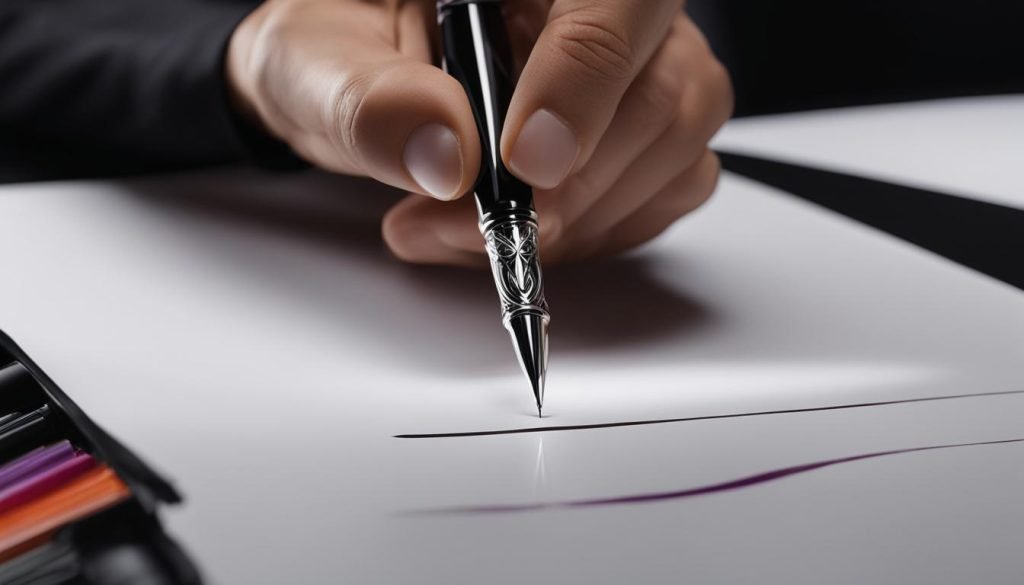
If you’re new to calligraphy and looking for the perfect pen to start your hand lettering journey, look no further than the Pilot Parallel Pen. This broad-edged calligraphy pen is widely regarded as one of the best options for beginners.
What sets the Pilot Parallel Pen apart is its user-friendly design and exceptional performance. The pen features a unique parallel plate nib that allows for smooth and consistent ink flow. This makes it easier for beginners to achieve clean and precise lines, even with minimal experience.
The Pilot Parallel Pen is available in various sizes, ranging from 1.5mm to 6.0mm. This ensures that you have the flexibility to create different calligraphy styles and experiment with various line widths. Additionally, the pen comes with a wide range of vibrant ink colors, allowing you to add a splash of creativity to your projects.
Another advantage of the Pilot Parallel Pen is its affordability. It offers excellent value for money, making it a popular choice among beginners who want to invest in a reliable and high-quality calligraphy pen without breaking the bank.
When using the Pilot Parallel Pen, it is recommended to pair it with smooth and bleed-resistant paper for optimal results. This ensures that the ink flows smoothly and does not feather or bleed through the page. Experimenting with different paper textures can also add uniqueness to your calligraphy projects.
| Pros | Cons |
|---|---|
| Smooth and consistent ink flow | May require practice to master |
| Wide range of ink colors | Not suitable for fine details |
| Affordable and great value for money | Requires specific paper for optimal performance |
| Easy to use for beginners |
Alternative Pens for Broad-Edged Calligraphy Styles
When it comes to broad-edged calligraphy styles, there are several alternative pens that can offer ease of use and impressive results. If you’re looking for a reliable option that mimics the feel of a traditional calligraphy pen, solid felt-tip markers are a great choice. These markers provide a consistent flow of ink and offer better control compared to more traditional dip pens. They also come in a wide range of colors, allowing for creativity in your calligraphy projects.
If you prefer a pen specifically designed for calligraphy, the Kuretake Zig Calligraphy pen is worth considering. This pen features a felt tip that is perfect for creating bold and expressive strokes. It’s available in different nib sizes, allowing you to achieve various line widths. Additionally, the Sakura Pigma Calligrapher is another excellent option. Its durable fiber tip provides consistent ink flow and allows for smooth writing. The Sakura Pigma Calligrapher is known for its waterproof and fade-resistant ink, ensuring that your calligraphy will stand the test of time.
For those who prefer a more traditional approach, the Speedball Elegant Writer pen is an ideal choice. It features a chisel tip that allows for a range of line widths, making it perfect for broad-edged calligraphy styles. The pen’s water-based ink provides smooth and consistent results, and it comes in a variety of vibrant colors. With its affordable price and versatility, the Speedball Elegant Writer is a popular choice among calligraphy enthusiasts.
Alternative Pens for Broad-Edged Calligraphy Styles at a Glance
| Pen | Nib Type | Ink Type | Features |
|---|---|---|---|
| Solid Felt-Tip Markers | N/A | Various colors | Easy to use, wide color selection |
| Kuretake Zig Calligraphy | Felt tip | Water-based | Available in different nib sizes |
| Sakura Pigma Calligrapher | Fiber tip | Waterproof and fade-resistant | Durable and reliable |
| Speedball Elegant Writer | Chisel tip | Water-based | Affordable and versatile |
Exploring these alternatives to the traditional calligraphy pen can enhance your broad-edged calligraphy styles. Whether you prefer the convenience of solid felt-tip markers, the precision of the Kuretake Zig Calligraphy pen, the reliability of the Sakura Pigma Calligrapher, or the traditional charm of the Speedball Elegant Writer, there is a pen out there to suit your needs. Don’t be afraid to experiment and find the pen that brings out your creativity and allows you to express yourself through calligraphy.
Pointed Nib Calligraphy and Pencil Options

If you’re new to calligraphy and looking for a beginner-friendly option for pointed nib calligraphy, you have a couple of great options to consider. One option is to use a pencil, specifically the Faber Castell 5B pencil. This versatile pencil allows you to experiment with different line weights and create beautiful faux calligraphy. The soft lead and smooth graphite make it easy to control and achieve the desired effect.
Another option is the Pentel Fude Touch Sign Pen. This pen features a flexible brush nib that mimics the look of a pointed nib calligraphy pen. It’s perfect for beginners who want to explore pointed nib calligraphy without the hassle of dip pens and ink. The Pentel Fude Touch Sign Pen is also portable and convenient, making it an excellent choice for travel or on-the-go practice.
Whether you choose to use a pencil or the Pentel Fude Touch Sign Pen for your pointed nib calligraphy journey, both options offer versatility and ease of use. Remember, practice is key, so grab your preferred tool and start creating beautiful letterforms today!
Recommended Brush Pens for Pointed Nib Calligraphy
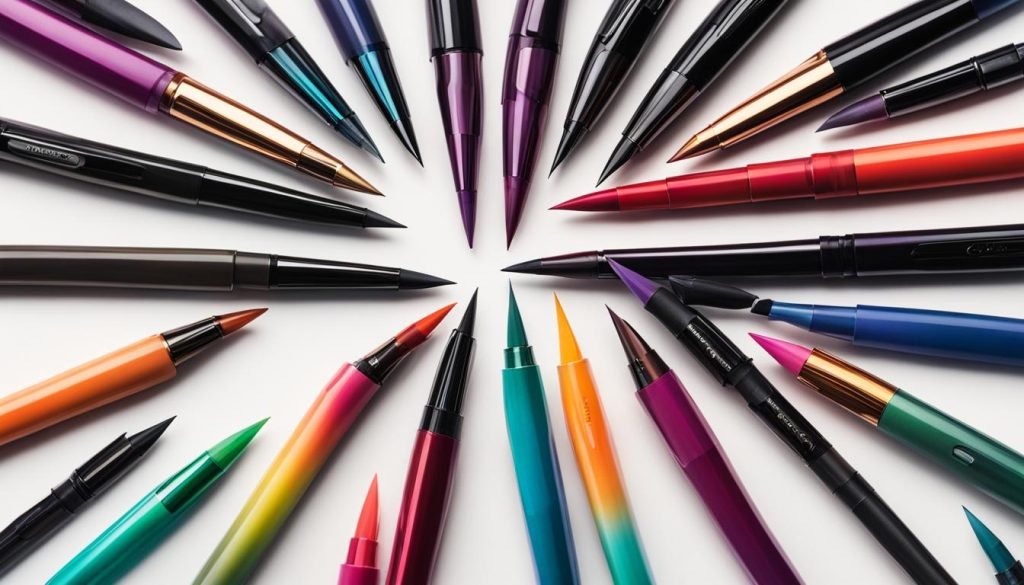
When it comes to pointed nib calligraphy, having the right tools is essential to achieving beautiful, precise lettering. Two brush pens that are highly recommended for pointed nib calligraphy are the Tombow Fudenosuke Brush Pen and the Tombow Dual Brush Pen.
Tombow Fudenosuke Brush Pen
The Tombow Fudenosuke Brush Pen features a firm brush tip that allows for excellent control over strokes. It is perfect for creating thin and thick lines with ease, making it ideal for pointed nib calligraphy styles. Whether you’re a beginner or an experienced calligrapher, this pen delivers consistent and smooth ink flow, resulting in stunning lettering. The Fudenosuke Brush Pen is available in both soft and hard tip variations, allowing you to choose the level of flexibility that suits your writing style.
Tombow Dual Brush Pen
The Tombow Dual Brush Pen is a versatile tool that allows you to create both broad and narrow strokes, making it perfect for pointed nib calligraphy. With its brush tip on one end and a fine tip on the other, this pen offers endless possibilities for creative lettering. The water-based ink blends effortlessly, enabling you to achieve beautiful gradients and shading effects. Available in a wide range of colors, the Tombow Dual Brush Pen allows you to add vibrant and expressive touches to your calligraphy projects.
Both the Tombow Fudenosuke Brush Pen and the Tombow Dual Brush Pen are highly regarded by calligraphers for their quality and performance. Whether you’re a beginner or an experienced artist, these brush pens are sure to enhance your pointed nib calligraphy skills and take your lettering to the next level.
| Pen | Features | Available Colors |
|---|---|---|
| Tombow Fudenosuke Brush Pen | Firm brush tip for precise control Available in soft and hard tip variations |
Black, Brown |
| Tombow Dual Brush Pen | Brush tip for broad strokes Fine tip for narrow lines Water-based ink for blending |
Wide range of colors |
Best Calligraphy Pen for Hand Lettering: Pilot Metropolitan
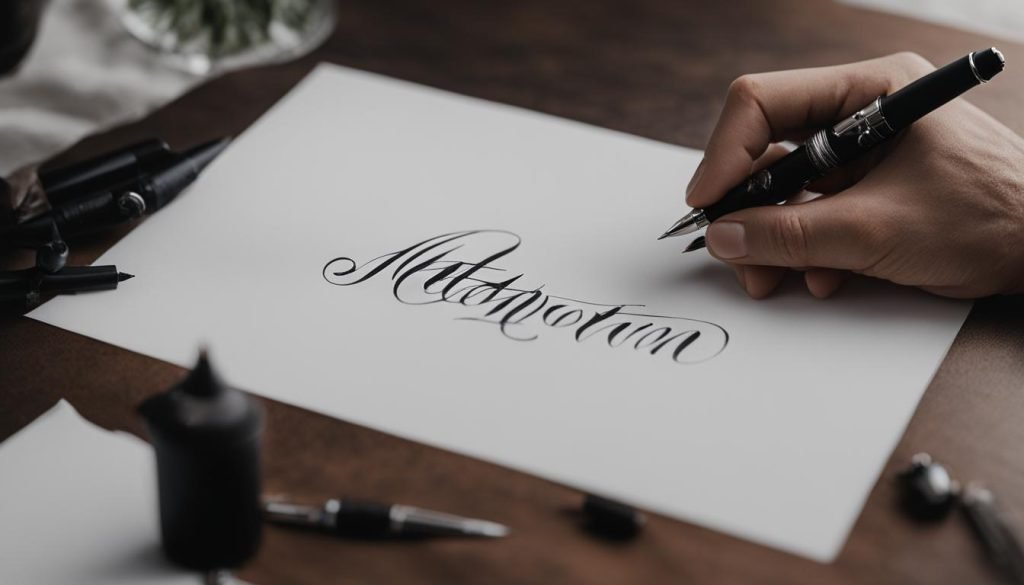
When it comes to hand lettering, finding the best calligraphy pen is crucial for achieving beautiful and precise strokes. One highly recommended option is the Pilot Metropolitan fountain pen. With its sleek design and exceptional performance, this pen is a favorite among both beginners and experienced hand lettering enthusiasts.
The Pilot Metropolitan fountain pen offers a smooth and controlled writing experience, making it ideal for creating elegant hand lettering designs. Its fine nib allows for precise line variation, allowing you to achieve both thick and thin strokes with ease. Whether you’re working on small details or larger compositions, this pen provides excellent control and accuracy.
One of the standout features of the Pilot Metropolitan is its affordability. Despite its high-quality construction and premium performance, this fountain pen is budget-friendly, making it a great option for those just starting out in hand lettering. You don’t have to break the bank to get a pen that delivers exceptional results.
So, if you’re looking for the best calligraphy pen for hand lettering, the Pilot Metropolitan should be at the top of your list. Its stylish design, exceptional performance, and affordable price point make it a must-have tool for any hand lettering project. With the Pilot Metropolitan fountain pen in your hand, you’ll be able to bring your creative visions to life with confidence and precision.
Table: Pilot Metropolitan Fountain Pen Specifications
| Material | Nib Size | Ink Type |
|---|---|---|
| Brass | Fine | Refillable cartridge or converter |
Alternative Calligraphy Pens: Tombow and Staedtler
If you’re looking for alternative options for calligraphy pens, both Tombow and Staedtler offer a range of high-quality choices. Whether you’re a beginner or a seasoned calligrapher, these pens are worth considering for your hand lettering projects. Let’s take a closer look at what each brand has to offer.
Tombow Fudenosuke Brush Pen
The Tombow Fudenosuke Brush Pen is a popular choice among calligraphers. It features a firm brush tip that allows for precise control over strokes, making it ideal for both beginners and experienced artists. This pen is available in multiple colors, allowing you to add a creative touch to your hand lettering. The compact size makes it comfortable to hold and easy to carry around, making it a convenient option for on-the-go lettering.
Tombow Dual Brush Pen
The Tombow Dual Brush Pen is another versatile option for calligraphy. It features a flexible brush tip on one end and a fine tip on the other, allowing you to create both broad and narrow strokes with ease. This pen is known for its vibrant colors and water-based ink, which blend smoothly and produce stunning results. Whether you’re working on large-scale projects or intricate details, the Tombow Dual Brush Pen offers the versatility to bring your hand lettering to life.
Staedtler Calligraphy Pen Set
If you’re looking for a comprehensive set of calligraphy pens, the Staedtler Calligraphy Pen Set is a great choice. It includes four different nib sizes, allowing you to experiment with various line widths and styles. The pens feature long-lasting metal nibs and ergonomic pen barrels for comfortable writing. This set is perfect for calligraphers who want to explore different techniques and create beautiful hand lettering pieces.
Staedtler Marsgraphic Duo
The Staedtler Marsgraphic Duo is another fantastic option for calligraphy enthusiasts. This pen features two different tips: a flexible brush tip for creating expressive strokes and a fine-liner tip for precise details. The water-based pigment ink provides smooth and consistent flow, ensuring crisp and vibrant lettering. With its versatility and durability, the Staedtler Marsgraphic Duo is an excellent choice for hand lettering projects of any scale.
Table: Calligraphy Pen Comparison
| Pen | Tip | Ink Type | Features |
|---|---|---|---|
| Tombow Fudenosuke Brush Pen | Brush | Water-based | – Firm brush tip for precise control – Multiple colors available |
| Tombow Dual Brush Pen | Brush and fine | Water-based | – Dual tips for broad and narrow strokes – Vibrant blendable colors |
| Staedtler Calligraphy Pen Set | Calligraphy nibs | Water-based | – Four nib sizes for versatility – Ergonomic pen barrels |
| Staedtler Marsgraphic Duo | Brush and fine-liner | Pigment-based | – Dual tips for expressive strokes and precision – Water-based pigment ink |
Best Calligraphy Pen for Hand Lettering: Faber-Castell Pitt Artist Pen
If you’re looking for the best calligraphy pen for hand lettering, the Faber-Castell Pitt Artist Pen is a top choice. This pen is known for its high-quality brush nib, which allows for precise control and smooth, consistent strokes. Whether you’re a beginner or an experienced hand lettering artist, the Faber-Castell Pitt Artist Pen offers versatility and reliability.
The Faber-Castell Pitt Artist Pen is favored by hand lettering enthusiasts for several reasons. First, its brush nib is designed to replicate the natural strokes of a traditional calligraphy brush, making it perfect for creating elegant letterforms and decorative flourishes. The brush nib is also highly durable, ensuring that it maintains its shape over time and provides consistent results with each use.
Another notable feature of the Faber-Castell Pitt Artist Pen is its use of India ink. India ink is a waterproof and lightfast ink that produces rich, vibrant colors. This means that your hand lettering creations will stand the test of time and maintain their brilliance. The Faber-Castell Pitt Artist Pen is available in a range of colors, allowing you to explore your creativity and add depth to your hand lettering projects.
Why Choose the Faber-Castell Pitt Artist Pen?
With its brush nib and India ink, the Faber-Castell Pitt Artist Pen offers a combination of precision and versatility that makes it the best calligraphy pen for hand lettering. Whether you’re working on invitations, envelopes, or personalized artwork, this pen provides the control and quality you need to bring your ideas to life. Its reliable performance and long-lasting ink ensure that your hand lettering will continue to impress.
Faber-Castell Grip 2011 Calligraphy Pen: A Comfortable and Versatile Option
If you’re looking for a calligraphy pen that combines comfort, versatility, and eco-friendliness, the Faber-Castell Grip 2011 Calligraphy Pen is an excellent choice. With its ergonomic grip and refillable ink cartridge, this pen is designed to provide a comfortable and enjoyable writing experience for calligraphy enthusiasts of all levels.
The ergonomic grip of the Faber-Castell Grip 2011 Calligraphy Pen ensures that you can write for extended periods without experiencing hand fatigue. The pen fits comfortably in your hand, allowing for precise control over your strokes. Whether you’re a beginner or an experienced calligrapher, this pen will enhance your writing experience and help you achieve beautifully flowing letters.
Another great feature of the Faber-Castell Grip 2011 Calligraphy Pen is its refillable ink cartridge. This not only reduces waste by eliminating the need for disposable ink cartridges but also allows you to experiment with a variety of ink colors. Simply refill the cartridge with your favorite ink and start creating stunning calligraphy designs.
With its ergonomic grip, refillable ink cartridge, and wide range of available nib sizes, the Faber-Castell Grip 2011 Calligraphy Pen offers both comfort and versatility in your calligraphy projects. Whether you’re working on wedding invitations, art projects, or personal notes, this pen will be your reliable companion. Enjoy the smooth writing experience and the freedom to customize your ink choices with the Faber-Castell Grip 2011 Calligraphy Pen.
Table: Comparing the Faber-Castell Grip 2011 Calligraphy Pen with Other Options
| Calligraphy Pen | Ergonomic Grip | Refillable Ink Cartridge | Nib Size Options |
|---|---|---|---|
| Faber-Castell Grip 2011 Calligraphy Pen | Yes | Yes | Multiple sizes available |
| Other Calligraphy Pen 1 | No | No | Limited sizes |
| Other Calligraphy Pen 2 | No | No | Limited sizes |
“The Faber-Castell Grip 2011 Calligraphy Pen is a game-changer. The ergonomic grip makes it comfortable to use for long periods, and the refillable ink cartridge is not only environmentally friendly but also allows creative freedom with different ink colors. This pen has become my go-to choice for all my calligraphy projects.” – Calligraphy Enthusiast
Selecting the Right Ink and Paper for Calligraphy
Choosing the right ink and paper is essential for achieving beautiful calligraphy results. The type of ink you use can greatly impact the appearance and longevity of your artwork. There are three main types of ink to consider: dye-based, pigment-based, and water-based inks. Dye-based inks are vibrant and flow smoothly on paper, making them great for creating colorful calligraphy. Pigment-based inks, on the other hand, are fade-resistant and offer excellent water resistance, making them ideal for projects that may come into contact with moisture. Water-based inks are versatile and can be used with brush pens or traditional dip pens, offering a balance between vibrancy and water resistance.
When it comes to ink colors and effects, the options are endless. You can choose from a wide range of colors to suit your style and preference. Experimenting with metallic or shimmering inks can add a touch of elegance and uniqueness to your calligraphy. Additionally, some inks offer special effects such as blending or gradient effects, allowing for even more creativity in your artwork.
Equally important is selecting the right paper for your calligraphy projects. The type of paper can affect the flow of ink and the overall look of your lettering. Consider the weight and texture of the paper when making your choice. Heavier weight papers, such as cardstock or watercolor paper, are ideal for projects that require more durability or calligraphy techniques that involve applying pressure. Lighter weight papers, like printer paper or vellum, are suitable for practice or projects that do not require heavy ink application. The texture of the paper can also influence the appearance of your calligraphy. Smooth papers offer a clean and precise look, while textured papers can add character and depth to your lettering.
Remember, the key to selecting the right ink and paper for calligraphy is to experiment and find what works best for you. Don’t be afraid to try different combinations and explore various options to discover your own unique style. With the right ink and paper, you’ll be able to create stunning calligraphy pieces that truly stand out.
| Ink Type | Characteristics |
|---|---|
| Dye-based ink | Vibrant colors, smooth flow |
| Pigment-based ink | Fade-resistant, water-resistant |
| Water-based ink | Versatile, suitable for brush pens and dip pens |
| Ink Colors and Effects | Description |
|---|---|
| Metallic or shimmering inks | Add elegance and uniqueness to calligraphy |
| Blending or gradient effects | Create unique color transitions in your artwork |
| Types of Paper | Characteristics |
|---|---|
| Heavier weight papers | Durable, ideal for projects involving pressure |
| Lighter weight papers | Suitable for practice and projects with light ink application |
| Smooth papers | Clean and precise look |
| Textured papers | Adds character and depth to calligraphy |
Conclusion
Congratulations on reaching the end of our guide to calligraphy pen choices for hand lettering! We hope you have found this article informative and helpful in your quest for the optimal pen selection. Remember, the key to achieving beautiful hand lettering lies in selecting the right tools that suit your personal preferences and desired calligraphy styles.
By considering factors such as nib type, ink options, and paper characteristics, you can make informed decisions and enhance your calligraphy journey. Whether you prefer broad-edged calligraphy pens, pointed nibs, or brush pens, there is a wide array of choices available to explore.
Thanks for joining us on this calligraphy pen adventure! We recommend trying out the recommended pens mentioned in this article and experimenting with different options. With practice and the right tools, you’ll be able to create stunning hand lettering pieces that showcase your unique style and creativity. Happy lettering!
FAQ
What are the different calligraphy pen categories?
The three main calligraphy pen categories are broad-edged calligraphy pens, pointed nib calligraphy pens, and brush pens.
Which calligraphy pen is best for beginners?
The Pilot Parallel Pen is highly recommended for beginners due to its popularity, affordability, and ease of use.
Are there any alternative pens for broad-edged calligraphy styles?
Yes, solid felt-tip markers such as the Kuretake Zig Calligraphy, Sakura Pigma Calligrapher, and Speedball Elegant writer are easier-to-use options.
What calligraphy pen is suitable for pointed nib calligraphy styles?
A pencil or a smaller-sized brush pen, such as the Faber Castell 5B pencil or the Pentel Fude Touch Sign Pen, are suitable options for beginners.
Are there any recommended brush pens for pointed nib calligraphy?
Yes, the Tombow Fudenosuke Brush Pen and the Tombow Dual Brush Pen are both versatile options for pointed nib calligraphy.
What is the best calligraphy pen for hand lettering?
The Pilot Metropolitan is highly recommended for hand lettering due to its stylish design, affordability, and suitability for different projects.
What are some alternative calligraphy pens for hand lettering?
The Tombow Fudenosuke Brush Pen, Tombow Dual Brush Pen, Staedtler Calligraphy Pen Set, and Staedtler Marsgraphic Duo are all versatile options for hand lettering.
What is the best calligraphy pen for hand lettering with a durable brush nib?
The Faber-Castell Pitt Artist Pen is highly recommended for its durable brush nib, suitability for various hand lettering styles, and use of waterproof and lightfast India ink.
Is there an alternative calligraphy pen with an ergonomic grip for hand lettering?
Yes, the Faber-Castell Grip 2011 Calligraphy Pen is a great alternative with an ergonomic grip, range of available nib sizes, and a refillable ink cartridge.
What should I consider when selecting ink and paper for calligraphy?
Consider the type of ink (dye-based, pigment-based, or water-based) and the effects and colors available. Also, consider the type of paper, including weight and texture.
How important is it to make the right calligraphy pen choices for hand lettering?
It is crucial to consider individual preferences, skill level, and desired calligraphy styles when selecting the right calligraphy pen. Experimenting with different options is encouraged to find the perfect match.

